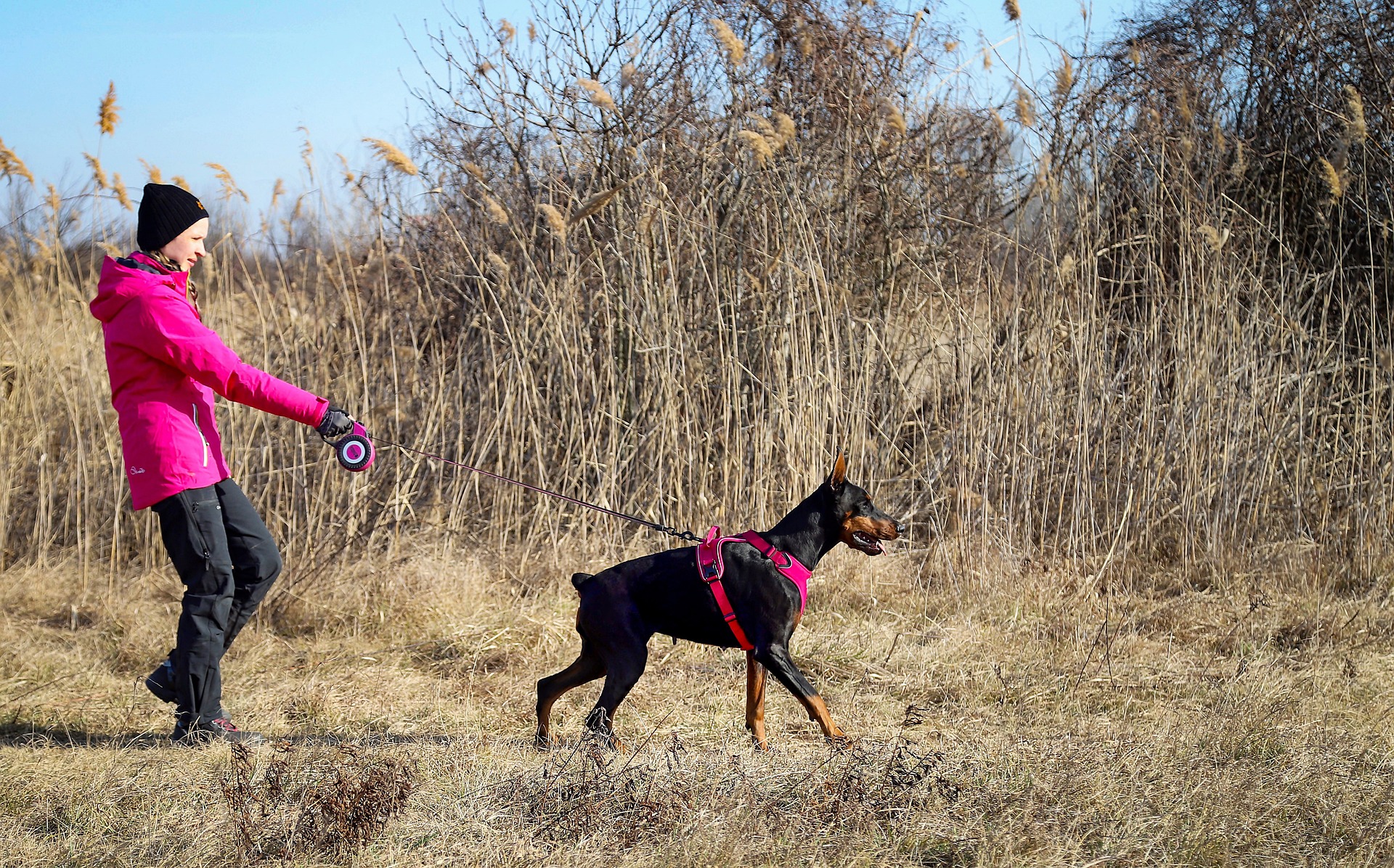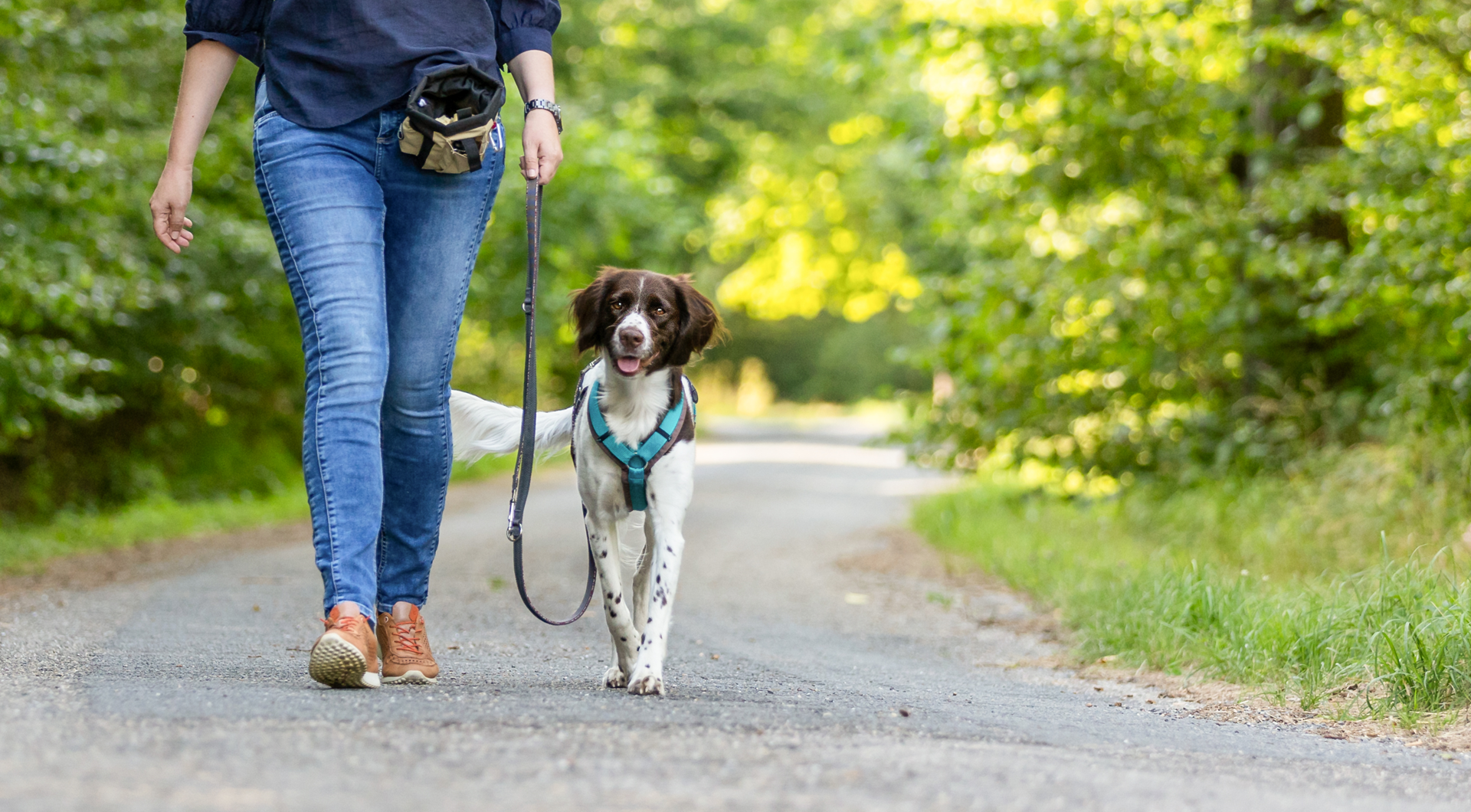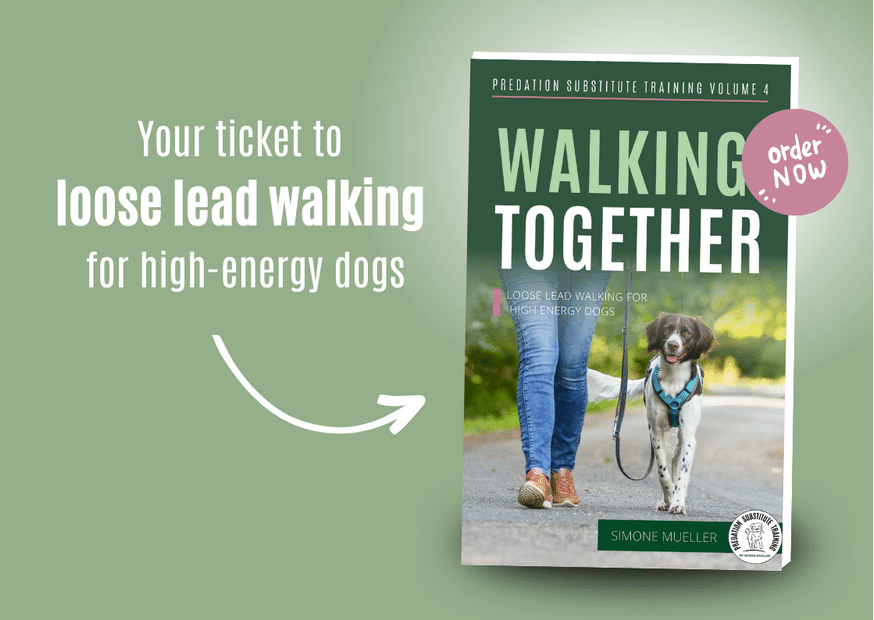Navigating the world of loose leash walking with a high-energy dog can feel like a rollercoaster of frustration and hope. Every tug on the leash, every distracted sniff, seems to echo the struggle of countless walks before.
But fear not, for you are not alone in this journey. In fact, the challenges you face are often deeply rooted in your dog’s nature, upbringing, and environment. Today, let’s shine a light on three common reasons why your high-energy pup may be pulling on the leash with such gusto, and more importantly, how you can transform these challenges into opportunities for loose-leash walking!

Here are three of the most common reasons behind why your high-energy dog is pulling so much on the lead:
Reason 1: They are aroused and stressed by the environment
Both stress and excitement can trigger your dog to show predatory behaviour and genetically anchored behaviour, which are self-reinforcing for them. Just like humans, when you are feeling stressed, you are more likely to resort to behaviour that feels good for you and something you enjoy. And, because many high-drive dogs can find the environment they are in highly arousing, exciting, and/or stressful, it’s natural for them to default to these feel-good behaviours, which are easy for them to perform without too much thought.
So, with this in mind, if you have a dog who is bred to run around in big circles to find prey, or to rummage in the bushes to flush birds for example, they will automatically default to this genetically anchored behaviour in times of stress and high arousal. Therefore, loose lead walking is not at the top of their agenda! So much so, when your dog has defaulted into hunting mode, they are no longer in a thinking state, which will not set them up for successful loose lead walking training.
My book ‘Walking Together!’ is available as ebook and paperback. Just click the button to order your copy on Amazon.
Reason 2: To Gain access to interesting scents
Sniffing is a natural, and extremely important, behaviour for any dog, but certain breeds value it even more highly than others. This is particularly apparent in breeds belonging to the Hound family, because they are intentionally bred to sniff and track wildlife. They often have such strong urges to search for and follow scents, that it makes it almost impossible for them to listen to or respond to any other cues at that time.
This strong desire to access scents is so consuming for them, that they can find it much more difficult to maintain loose lead walking. Instead, they lunge from one interesting smell to another, becoming increasingly aroused and excited by their environment. They can become so obsessed with this mission, that when their human tries to slow them down, stop them from pulling, and encourage them to walk on a loose lead instead, they quickly become frustrated.
Another point to consider here, is that every time your dog pulls hard on their lead, and in return accesses the scent they are desperate to reach, this is self-rewarding behaviour. This means that they have been inadvertently rewarded for pulling on the lead, by receiving access to the interesting scent in return. Of course, it’s vital that your dog is allowed to sniff, but there does need to be a certain degree of guidance from you and responsiveness from them at the same time.
Reason 3: Your Dog’s Gait is different to yours
If you watch your dog moving when they are off lead, their go-to gait is usually a trot, with some dogs naturally preferring a canter or gallop. Not only is your dog’s pace likely to be naturally faster than yours, but many also have different movement patterns to us. Humans are used to walking in straight lines, to get them from one point to another, often taking the shortest and most direct route. However, many dogs, especially hunting breeds, have their own preferred movement patterns. For example, Pointers and Setters tend to run in large circles, and Spaniels are bred to run frantically to flush wildlife from bushes. These are the default options for these breeds, and it is genetically hardwired into them to move in this way.
With this in mind, it makes sense that asking these high-drive dogs to walk next to you, on a loose lead, while asking them to match their pace to yours, is going to be difficult for them to achieve. Loose lead walking becomes a constant impulse control exercise for your working dog, which in itself is challenging. Add to this the idea that this newlt expected movement pattern, pace and gait will be very unnatural for them, meaning that the dog’s muscles are simply not designed for slow walking, making it feel awkward, difficult, and even uncomfortable for them to do.

From Struggle to Success: Start ‘Walking Together’
Understanding the root causes of your dog’s struggles with loose leash walking is just the first step on the path to transformation. Armed with this knowledge, you hold the key to turning your walks into harmonious, leash-free adventures for both – you and your dog.
If you’re eager to delve deeper and discover gentle, effective methods to help your dog overcome leash pulling without resorting to force or aversives, look no further than my latest book in the Predation Substitute Training Series: “Walking Together”.
In this book, I unlock the secrets to leash-walking success and forge an unbreakable bond with your canine companion. Get your copy now and embark on a journey of joyful, stress-free walks together!
PS: There are many reasons why high-drive dogs can find loose lead walking more challenging than other lower-energy breeds. These reasons relate to their breed traits, their individual needs, their previous learning history, and their environment, as well as other contributing factors. In my book, you will find pracitcal solutions, which help you to overcome all these struggles!


Is this available in other formats?